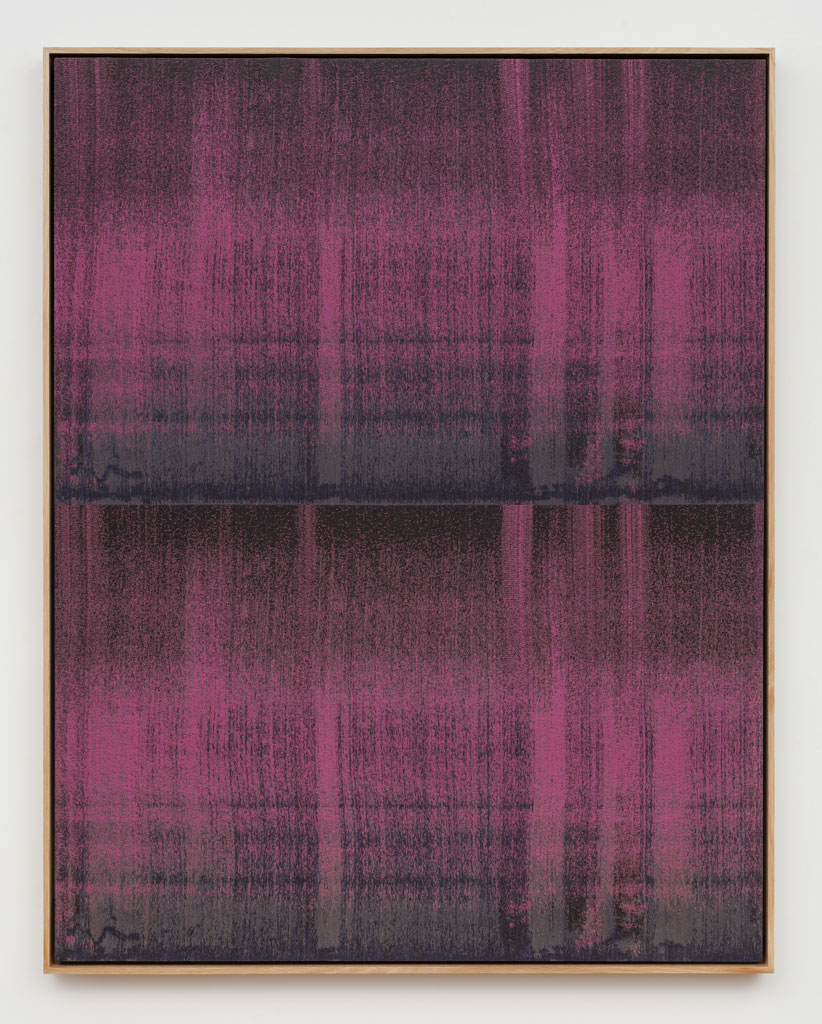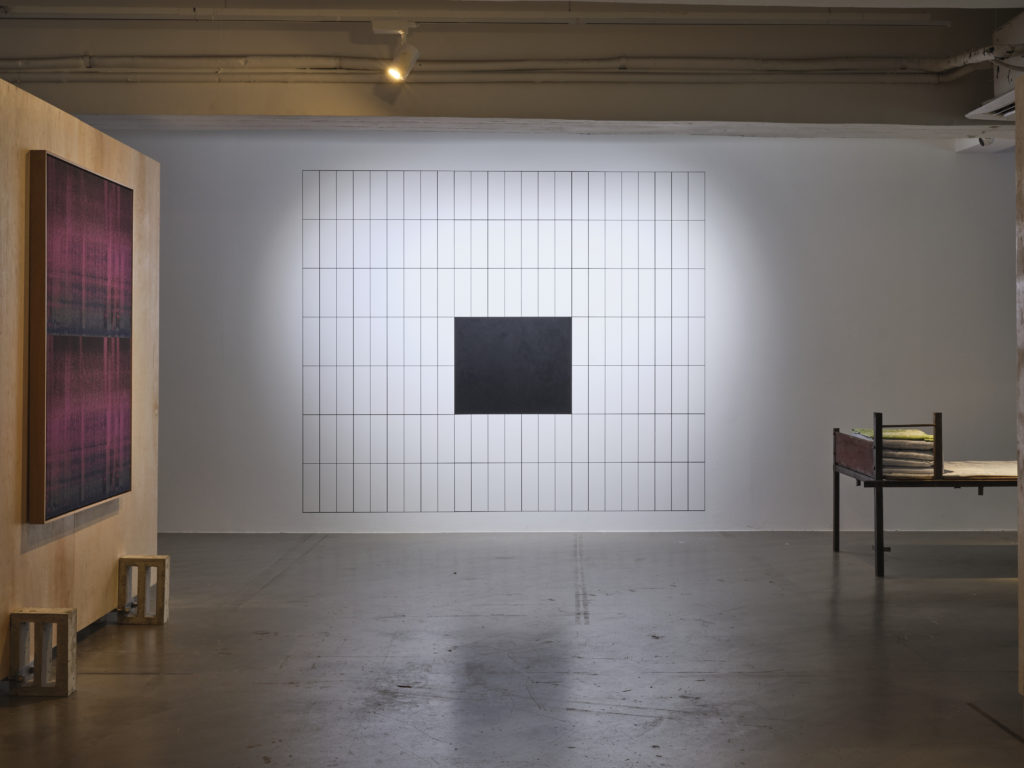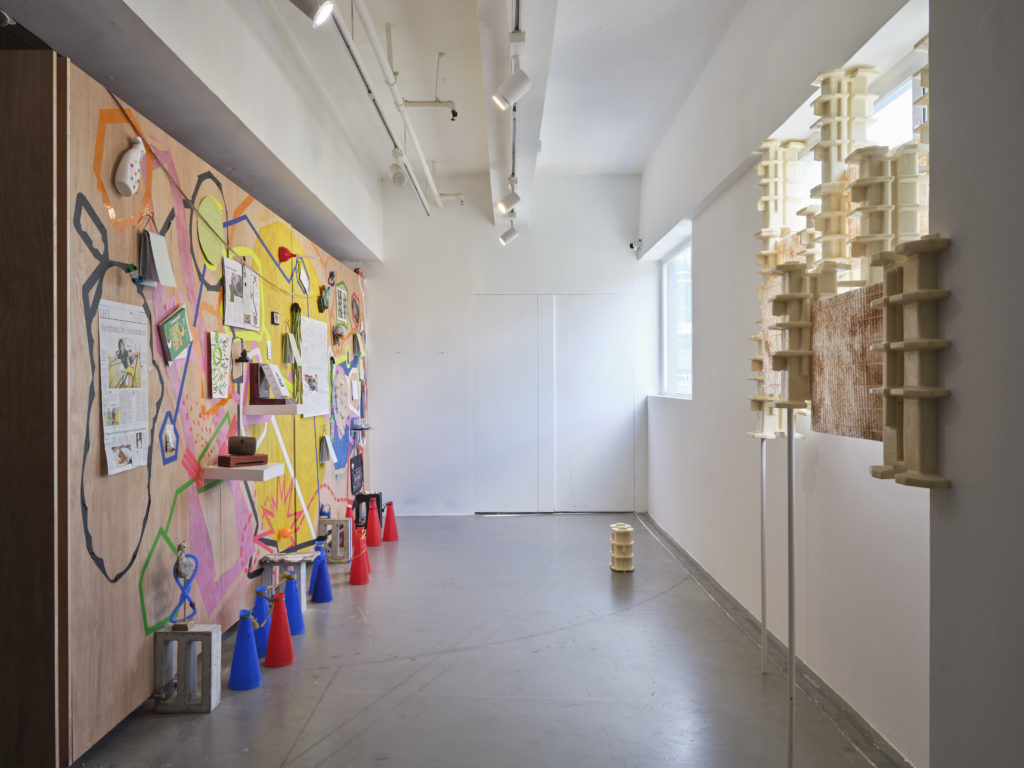By Amandine Vabre Chau
Proposée par Celia Ho et Billy Tang, le nouveau directeur de Para Site, l’exposition signals…瞬息 s’étend sur six mois et se déroule en trois phases. D’abord storms and patterns (tempêtes et motifs), puis folds and splits (plis et fissures) et enfin here and there (ici et là).
Inaugurée en mars, cette exposition est axée sur le passage du temps. Elle adopte une méthode curatoriale mouvante grâce à une configuration ambitieuse de l’espace et à une minutieuse sélection d’artistes. Prenant pour inspiration la mythique galerie Signals London (1964–1966), Para Site nous propose une exposition dynamique et méticuleuse. La deuxième partie s’est achevée le 30 juillet, et le troisième et dernier chapitre a débuté le 12 août. L’exposition signals sera visible jusqu’au 29 septembre.
Curated by Celia Ho and Para Site’s new director Billy Tang, ‘signals…瞬息’ is a six months long exhibition unfolding in three parts: starting with ‘storms and patterns‘, followed by ‘folds and splits‘, and ending with ‘here and there‘.
Opened in March, this exhibition embraces a fluid curation with a careful selection of artists and an ambitious (re)configuration of the space. Taking inspiration from the seminal gallery and art salon Signals London (1964–1966), Para Site presents a dynamic range of artworks that bounce off each other, putting seemingly isolated stories in conversation. The second part came to an end on July 30th allowing for the third and final chapter to begin on the 12th of this month. ‘‘signals…瞬息’ will be on view until September 29th.

「瞬息⋯⋯展與接」展覽現場,香港Para Site藝術空間,2023年。攝影:何兆南。
L’exposition « signals…瞬息 » se concentre sur l’art cinétique et ‘Folds and Splits’ en est la deuxième phase. Celle-ci explore les temporalités transitoires, intermédiaires et ambivalentes. Refusant une conception linéaire de l’espace-temps, l’exposition presente plutôt des passages et carrefours. Pour refleter l’exploration itinérante du projet, une zone fermée, ouverte ou semi-ouverte prend forme dans l’espace à l’aide de multiples panneaux de bois mobiles conçus par Joel Austin. Les curateur.ice.s divisent alors galerie en fonction de leurs besoins. Ces panneaux furent inspirés par les briques emblématiques de Hong Kong se trouvant dans les habitations publiques. En utilisant peu de matériaux, cette démarche répondait également au besoin croissant de maintenir une approche écologique dans le monde de l’art. Un sujet important qui fut abordé par la galerie lors d’une conférence en juillet.
‘signals…瞬息’ focuses on kinetic art and puts emphasis on related notions such as communication, action, and intervention. ‘Folds and Splits’ is the second iteration of the eponymous exhibtion, which I had the pleasure of seeing. It delved into transitional, intermediate and ambivalent temporalities. Refusing a linear conception of space and time, the show instead explored passageways and crossroads. Indeed, movable wooden boards were designed by Joel Austin to echo the exhibition’s ever-changing nature, at the heart of its curatorial concept. The rearrangement of which could create closed-off, opened, or tunnelling areas. Upholding these were large blocks inspired by Hong Kong’s iconic bricks found in public housing estates. Using little material to produce, the design also addressed the rising need to maintain for sustainability in exhibition-making. This was touched upon during a talk on eco-friendly processes in the art world.

「瞬息⋯⋯展與接」展覽現場,香港Para Site藝術空間,2023年。攝影:何兆南。
( With multimedia sculpture ‘Tree of Life’ by Linda Chiu-Han Lai on view.)
Entrant dans la galerie, nous sommes d’abord accueillis par la sculpture Tree of Life de Linda Chiu-Han Lai. Cette oeuvre est composée de nombreux objets tels que des gadgets électroniques, du bambou, du papier, des tissus et bien d’autres matériaux. Elle mêle récits personnels, expérimentaux et politiques : il s’agit d’un assemblage d’éléments biographiques et anti-consuméristes. Plus qu’une simple accumulation, l’œuvre de Linda Chiu-Han Lai se développe progressivement au fil de l’exposition, de nouveaux composants étant ajoutés à chaque phase. De nouveaux « fruits » apparaissent alors, attendant notre découverte.
When entering the gallery, we are first greeted by Linda Chiu-Han Lai’s multimedia sculpture ‘Tree of Life’ composed of various items including bamboo, electronic gadgets, paper foldings, fabrics and more. This piece combines both personal narratives and political ones with its selection of objects ranging from biographical to anti-consumerist. Linda Chiu-Han Lai’s work grows progressively as the exhibition continues, new components being added in each phase with new “fruits” awaiting our discovery.

「瞬息⋯⋯展與接」展覽現場,香港Para Site藝術空間,2023年。攝影:何兆南。
(With sculpture ‘The past from the ruins’ by Jaffa Lam on view.)
À côté se trouvait l’oeuvre de Jaffa Lam, The past from the ruins. Particulièrement intéressée par cet objet, j’ai été agréablement surprise d’entendre la curatrice expliquer l’intention de l’artiste derrière ce ballon de football à toute apparence ordinaire. Évoquant le sentiment d’isolement et de solitude lié à la migration, ce ballon est déplacé dans la galerie durant l’exposition. À la recherche de refuge, il se blottit auprès des autres oeuvres. Il marque chacun de ses arrêts par une photo désposée au sol, nous pouvons alors retracer chacun de ses pas à travers ses yeux. Pesant 15 kg, sa lourdeur reflète le sentiment d’être figé dans le temps, bloqué, voire immobilisé, rendant son mouvement ardu et difficile. Pourtant, choisissant un ballon, Jaffa Lam rappelle les joies adolescentes d’un sport accessible à tous.tes. Ce qui m’interpella le plus fut que cette oeuvre ne peut exister qu’en relation aux autres oeuvres. Elle cherche du réconfort dans ‘l’autre’ et ne peut survivre qu’avec l’autre. Elle exige plus qu’elle-même, plus que sa propre existance. Lam invite le public à pénétrer dans l’espace comme son oeuvre le fait, nous encourageant à suivre les liens entre les différentes pièces, à retracer ses pas.
Next to it was Jaffa Lam’s newly commissioned work ‘The past from the ruins’. Particularly interested in this piece, I was pleasantly surprised to hear the curator explain the artist’s intentions behind this seemingly ordinary football. Evoking the feelings of loneliness resulting from migration, this object is moved around the space throughout the show and placed next to another existing work, as if seeking refuge. It marks its every stop through a polaroid photo, making us able to trace its every steps. While it weights 15kg, a heaviness that mirrors the sense of being stuck and frozen in time, Lam recalls the adolescent joys found in an elementary sport that is accessible to all walks of life. What especially marked me however, was that this work essentially exists only in relation to others. It is an artwork that demands more than itself, that actively looks for safety in the ‘other’. Lam invites the audience in, encouraging us to follow the connections between different pieces, and carefully observe this crossroad of narratives.

Cotton, polyester, rayon, wool acoustic baffling felt, and white oak – 139.6 x 110.3 x 5.7 cm (framed)
© Mika Tajima, Courtesy of the artist. Photo: Charles Benton

「瞬息⋯⋯展與接」展覽現場,香港Para Site藝術空間,2023年。攝影:何兆南。
(With Mika Tajima’s Negative Entropy on view, on the left.)
« Signals » (Signaux) s’avère être la description parfaite en voyant le travail de Mika Tajima . Negative Entropy est une oeuvre tissée au Jacquard. L’artiste enregistre des sons dans des lieux spécifiques puis les retranscrit en images abstraites révélant un paysage sonore. Son travail est à la fois un enregistrement, une traduction, un rappel et une interprétation. Cette pièce s’inspire du fait que le code binaire (0 et 1) est un emprunt à la machine à tisser Jacquard. En effet, cette dernière utilise une série de cartes perforées pour automatiser le tissage. Cette peinture nous permet alors de mettre en évidence la relation entre deux mondes aux apparences disparates. L’œuvre de Mika Tajima plonge au cœur des problématiques liées aux interventions humaines en exposant d’importantes questions liées au contrôle, à l’automatisation et au progrès technologique.
“Signals” is a perfect descriptive for Mika Tajima’s work. ‘Negative Entropy’ is an abstract Jacquard woven portrait. The artist records sound patterns in specific locations then transcribes them into lyrical abstract images, revealing an invisible sonic landscape. Her work is simultaneously a recording, a translation and an interpretation. This piece takes inspiration from the binary code we use for data, which is believed to borrow from the Jacquard loom machine. Indeed, the latter uses a series of punched cards to automate the weaving process. Similar to a bridge between two worlds, this painting allows us to connect supposedly separate environments while exploring human agency in relation to technological progress and data.

「瞬息⋯⋯展與接」展覽現場,香港Para Site藝術空間,2023年。攝影:何兆南。
L’exposition signals…瞬息 : folds and splits nous invite à examiner les liens sous-jacents: entre chaque oeuvres, entre l’individu et le collectif, ainsi qu’entre le temps et la transformation que celui-ci génère.
‘signals…瞬息: folds and splits’ invites us to look for connections beyond the surface. Connections between each artwork, between time and transformation, between the individual and the collective. We are asked to observe the signals emanating from, to and through each piece.

「瞬息⋯⋯展與接」展覽現場,香港Para Site藝術空間,2023年。攝影:何兆南。
ACA project est une association française dédiée à la promotion de la connaissance de l’art contemporain asiatique, en particulier l’art contemporain chinois, coréen, japonais et d’Asie du sud-est. Grâce à notre réseau de bénévoles et de partenaires, nous publions régulièrement une newsletter, des actualités, des interviews, une base de données, et organisons des événements principalement en ligne et à Paris. Si vous aimez nos articles et nos actions, n’hésitez pas à nous soutenir par un don ou à nous écrire.
ACA project is a French association dedicated to the promotion of the knowledge about Asian contemporary art, in particular Chinese, Korea, Japanese and South-East Asian art. Thanks to our network of volunteers and partners, we publish a bimonthly newsletter, as well as news, interviews and database, and we organise or take part in events mostly online or in Paris, France. If you like our articles and our actions, feel free to support us by making a donation or writing to us.
